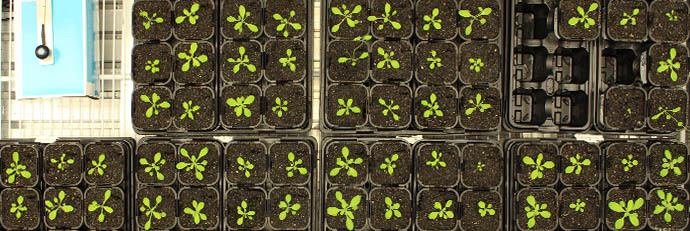Australian National University
Australia
As well as being the nation's capital, Canberra is the epicenter of agricultural research in Australia and home to the Commonwealth Scientific and Industrial Research Organisation (CSIRO) and the Australian National University (ANU), which boast some of the countries leading scientists. Conviron is well represented at these sites with over 150 chambers installed in the past five years.
With the laboratories of CSIRO and ANU only 100m apart, their researchers collaborate on a wide variety of projects as part of the High Resolution Plant Phenomics Centre (HRPPC). One of the latest initiatives is the ‘Spectral Pheno Climatron’, the brainchild of Justin Borevitz, who moved to Australia from the University of Chicago in 2012. Justin's team focuses on model species such as the mustard Arabidopsis and the grass Brachypodium as well foundation species including crops and more recently Eucalypts. Their research with Plant Phenomcs Climatron chambers are extending the boundaries of what traditionally can be done in a growth chamber.

Starting with customized Conviron PGC Flex Chambers, the project has added hardware and software for specific research with spectrum, phenomics and climate.
Spectral
Heliospectra L4A S10 and L4A S20 LED lights provide 7-10 spectral wave bands. The light quality and quantity are being adjusted with one minute time resolution to generate diurnal (sunrise and sunset) conditions with full sun, forest shade or with sun fleck conditions. In addition to simulating field-like lighting conditions, transient light settings can be used for imaging under specific wavelengths.
Pheno
The chambers also house RGB cameras that image up to 320 plants every 5-15 minutes. High resolution images are transferred in real time, preprocessed for distortion and color, and segmented into individual plants. This allows time lapse visualization of replicate genotypes across chambers to probe novel areas of plant physiology, development, and genetics.
Climatron
Using the climate prediction software package SolarCalc, developed in collaboration with the US Department of Agriculture (USDA), ANU plant scientists are incorporating seasonal and diurnal control settings into the Conviron chambers. Light, temperature and humidity settings change every minute to simulate the expected climate at regional locations around the world including past, future forecast and climate change conditions. Nighttime low temps bottom out at 5°C and daytime highs can reach over 35°C allowing sub-lethal stress events to be applied with or without pre-acclimation. In addition terminal droughts can be applied under spring or fall growing conditions.
The experimental designs and data analysis are complex, but are being shared through their open source TraitCapture software.
More details of Justin’s work can be found at borevitzlab.anu.edu.au and the APPF website which operates a geographically distributed model with facilities at the University of Adelaide, at CSIRO in Canberra and at the Australian National University – three internationally renowned plant research organizations. See SPC - SpectralPhenoClimatron (SPC) and Traitcapture.
